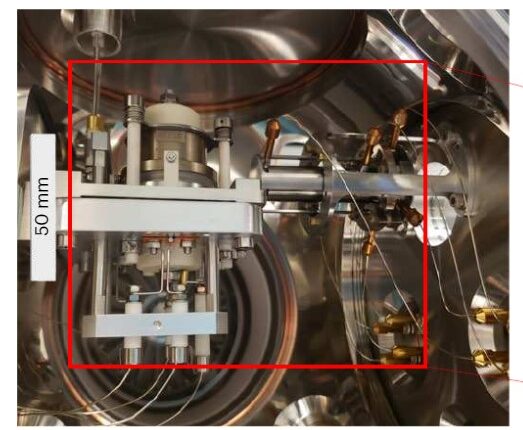SCIENTISTS have invented a new gadget to find signs of alien life on other planets – and it fits into the palm of your hand.
It is quite the revelation for Earth’s alien hunters.
The device weighs just 17 pounds and is 50mm in size.
It has been designed to be small enough to ride on a spacecraft destined for ocean worlds in our solar system, such as Jupiter’s moon Europa or Saturn’s moon Enceladus.
Scientists at the University of Maryland, in the US, aimed to build a miniaturised version of an instrument called an ‘Orbitrap’.
The Orbitrap device picks up on biosignatures left behind by extra-terrestrial life.


But they typically weigh several hundred pounds.
The new-and-improved alien hunting device also searches for biosignatures, which is any characteristic, element, molecule, or substance that can be used as evidence for past or present life – but is far lighter.
The device is expected to be critical for upcoming missions around our solar system, including Venus and Saturn’s moon Titan.
The instrument is “an engineering model of a spaceflight design that fits within the limited resources expected for a mission to the outer Solar System,” the team said in their latest research paper.
Most read in Tech
The new bit of tech is currently being referred to by scientists as the LDMS instrument.
This is because it uses Laser Desorption Mass Spectrometry (LDMS) to detect signs of life.
The instrument is designed to be able to tell the difference between real alien biosignatures and any Earth microbes that could have contaminated a sample.
Just because the device is small, however, doesn’t mean it’s any less powerful.
The tiny size of the tech actually makes it better at telling the difference between organic matter from aliens and Earth dwellers – which scientists say is surprisingly difficult at times.
The LDMS instrument has not yet been used in space, but it is expected to come in handy in upcoming missions.
Nasa’s Dragonfly rotorcraft is currently aiming to visit Titan sometime in the 2030s.
Best Phone and Gadget tips and hacks

Looking for tips and hacks for your phone? Want to find those secret features within social media apps? We have you covered…
We pay for your stories! Do you have a story for The Sun Online Tech & Science team? Email us at [email protected]










